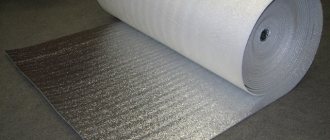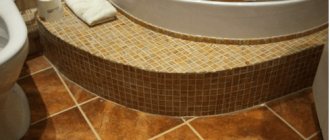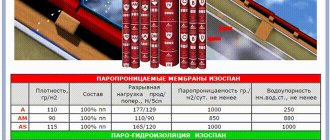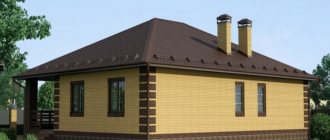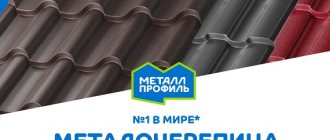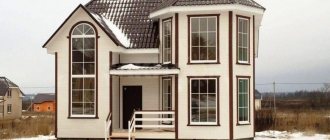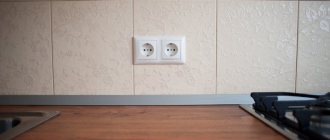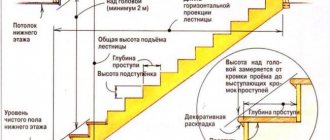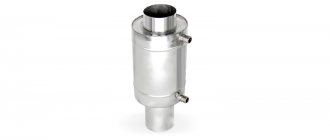Solar energy is one of the most promising and rapidly developing alternative sources of electricity. This is a limitless resource that can be used anywhere on the planet without polluting the environment. Agree, it would be nice to have your own alternative source of electricity.
It turns out that you can now convert solar energy into electricity right at home. Instead of bulky and fragile frame panels, flexible solar panels are now increasingly being used. But how can this be implemented in practice?
We will help you understand the structure of flexible solar panels and the principle of their operation. Useful recommendations for the selection and installation of structures are presented in our article. And for ease of perception of information, the article contains thematic photographs and videos.
What is special about flexible panels?
When examining a wall decorated with flexible panels, it will be difficult to distinguish a decorative coating consisting of rigid elements. Meanwhile, such products have a number of distinctive features, which include:
- increased flexibility;
- wear resistance;
- soundproofing properties;
- ease of cleaning;
- water resistance;
- a wide range, including panels that imitate natural materials;
- durability;
- ease of installation.
Considering this feature, when choosing a suitable finishing material, most people opt for this option. However, in this case it is necessary to take into account that flexible panels have a small thickness, which places increased demands on the quality of base preparation. In addition, the cost of one element cannot be called low and the material is artificial. This does not allow creating an optimal microclimate.
Principle of operation
Before describing the principle of operation of a solar battery, it is necessary to pay attention to several fundamental points, these are:
- A solar battery is a device consisting of a certain number of photovoltaic elements (converters), which are placed in a single housing and connected to each other in a certain sequence.
- The structure of photocells consists of two layers, which differ in the type of electrical conductivity, these are: “n” and “p” conductivity.
- The basis for the manufacture of photocells is silicon or another material that has the ability to absorb light rays.
- In a layer with “n” conductivity, phosphorus is added to the base (silicon or other material), and therefore, when they interact, an excess of electrons with negative polarity is formed in the layer.
- In a layer with “p” conductivity, boron is added to the base, as a result of their interaction, a lack of negative charges is formed in the layer, and as a result, “holes” are formed.
- The layers are located between electrodes with different polarities.
The solar panel works as follows:
- The negatively charged layer is exposed to sunlight;
- The sun's rays cause the active formation of additional negative charges and “holes”;
- Due to the fact that there is an electric field in the “pn” junction, under its influence the separation of positively and negatively charged particles occurs;
- Positive particles are directed to the top layer;
- Negative particles go to the bottom;
- A potential difference appears between the layers, i.e. constant tension is generated.
What characteristics should you pay attention to when choosing?
When choosing suitable flexible panels for decorating walls in your home, it is worth considering a number of parameters. The required properties will depend on the conditions of subsequent operation. Important parameters may include:
- size and shape. The speed of installation work and the possibility of implementing a specific design project depend on these characteristics. In one case, the desired effect can be achieved by attaching sheet material; in the second case, the best option would be a flexible laminate;
- moisture resistance. This property depends on the quality of the top layer. If you plan to cladding walls in rooms with high levels of humidity, this characteristic is important;
- color and pattern, which are selected taking into account the developed design project.
Advantages
- Translucency. Classic (polycrystalline and monocrystalline) solar panels are completely opaque. Amorphous thin-film batteries can be designed to replace a window in a home, letting in some light and converting some into electricity.
- Ease. Batteries made on film are several times lighter than classic ones, which gives more freedom in installation and simplifies operations with them.
- Flexibility. Thin-film batteries theoretically be bent in any plane without loss of performance.
- Impact resistance. The film does not break from falling during installation or from hail and remains operational in the most extreme conditions.
Kinds
The design of flexible panels may vary. This allows you to choose the best option for the design of a specific wall surface. When choosing the right type, you should compare the advantages and disadvantages of each to choose the most suitable one.
Sheets
An important advantage of this finishing material is the large width and length of one element. Manufacturers offer sheets whose width is 125 cm and length reaches 3 m. Thanks to this, it is possible to beautifully decorate a significant part of the wall at one time.
pros
- big square;
- high installation speed;
- ease of maintenance due to the minimum number of seams;
- a large assortment, among which sheets imitating brick and stone masonry are especially in demand;
- different texture.
Minuses
- high consumption due to the high consumption of materials during the installation process;
- increased requirements for the order of installation work.
Plates
Manufacturers offer a large number of square and rectangular elements. The size of one tile may vary. the shape of each tile is carefully thought out. Thanks to this, the room looks quite beautiful and neat. This significantly expands the possibility of their use when decorating wall surfaces.
pros
- a large assortment;
- wide size range;
- the ability to choose texture, color, texture;
- ease of design of wall sections of any complexity;
- the ability to form a mosaic surface.
Minuses
- lengthy installation due to the need to control the spatial position of each element;
- a large number of seams complicating installation.
Planks
Wall slats whose width is much less than their length. This is a so-called flexible laminate, which has a characteristic rectangular shape. The width of such a strip is on average 15 cm. The length varies over a wide range.
pros
- a large assortment;
- ease of installation
Minuses
- increased requirements for the quality of base preparation.
Flaws
- Low efficiency. If we do not consider laboratory samples, but evaluate the real performance of manufactured models, then at the output we will obtain an efficiency of no higher than 4%, which is three times less than that of a polycrystalline photocell.
Important. When using translucent photocells, the coefficient drops to a ridiculous 2% and you can hardly even charge your smartphone from one window. - High price. When compared with classic solar panels, their price per sq.m. comparable to the same polycrystalline models, but the power will be three times lower. If we compare panels of the same power, the picture will look like this (data from Aliexpress.com):
Comparison of film and silicon solar panel pricesThe difference in price is exactly three times, with the same power
- Reduced performance when heated. If in poly/monocrystalline batteries this figure reaches 12% of the rated power, then in flexible solar cells it reaches 30-40%.
Mounting features
The installation procedure for flexible panels may vary significantly. Manufacturers offer a large number of elements with an adhesive base. Installation in this case is performed in the following sequence:
- the foundation is being prepared. The old coating and all existing dirt are removed from the wall. After this, you must carefully inspect the base to check the flatness of the base and any mechanical damage. The wall is leveled by applying a sufficient layer of plaster. Wait for it to dry completely;
- the wall is primed to provide the necessary level of protection from the harmful influences of the environment and increase adhesion to the adhesive composition;
- preparing the material and tools that will be required when performing finishing work. Marking is carried out, which will be used to control the correct spatial position of the element;
- For parts with grooves installed in the corner, protruding fragments are cut off;
- An adhesive composition is applied to the underside of the prepared panels. if the surface is embossed, glue should be applied only to protruding elements;
- the flexible panel is applied to the base. Its position is controlled along the lines of previously applied markings. The panel is carefully pressed to the base;
- Use a clean rag to remove excess adhesive. To do this, you need to carefully smooth the entire surface of the panel with light pressure, ensuring that it fits snugly to the base;
- The remaining panels are glued in the same way. In this case, it is very important to ensure the correct spatial position not only relative to the horizontal or vertical, but also relative to other elements.
If you still have questions regarding the procedure for performing installation work. We suggest watching the following videos to understand the process technology in detail:
In addition to the glue method, there is a frame method. In this case, work is performed in the following sequence:
- The sheathing elements are treated with special antifungal and water-repellent agents. The planks are cut to size and attached to the wall. The screws are screwed strictly vertically to the surface of the plank;
- panels are cut to size using a knife or any other tool with the obligatory formation of an even cut line. The elements are attached to the prepared sheathing with metal staples or a construction stapler;
- We connect the panels to each other using a special lock. We fix it using the chosen method;
- We cut the last panel to size before installation.
About technology
To make a thin-film solar structure, semiconductor compounds are sputtered onto a flexible substrate (usually a polymer).
At first, they used exclusively amorphous silicon for this. But, I was not satisfied with the low efficiency of photocells - about 4-5%.
After the advent of selenide and telluride - innovative materials, it was possible to achieve a higher efficiency rate - up to 12%.
Required Tools
The list of tools and materials used may vary significantly. When choosing an adhesive method, it is very important to choose an adhesive with suitable characteristics. Most often for the installation of flexible panels they use:
- Special glue for polyvinyl chloride panels, for the packaging of which you will have to pay at least 200 rubles per 0.1 liter;
- A universal composition, for example, “Moment-montazh”, the cost of which starts at 550 rubles for 375g;
- Liquid nails, for 0.31 liters of which you will have to pay at least 170 rubles.
In addition to the adhesive composition, you must have in stock:
- Level, the price of which starts from 100 rubles with a price of 23 cm;
- A mounting knife, the price of which is at least 30 rubles;
- An assembly pencil, the cost of which starts from 10 rubles.
If installation is carried out using a frame method, you will need a screwdriver, saw and hammer drill. It is better to rent such a tool rather than buy it.
Instructions for installing solar panels on the roof
If you decide that flexible solar panels based on amorphous silicon are what you need to provide electricity to a private home, start planning the work.
Select the appropriate equipment and estimate the approximate number of panels. Then read the rules for installation and subsequent maintenance of solar cells.
But remember that the use of traditional silicon poly- and monocrystalline analogues is still much more productive.
Step 1. Calculation of the number of panels
Any work begins with a project. For design you need to make the necessary calculations, namely:
- daily electricity consumption;
- total required power of photocells;
- battery capacity;
- number of panels.
The simplest thing is to calculate electricity consumption. To do this, you need to take into account absolutely all electrical appliances that you use or theoretically can use.
Simple example:
- refrigerator – 200 W;
- computer - 300 W;
- TV – 150 W;
- economical light bulbs - 5 pieces of 20 W each.
The power of each device must be indicated in its documentation or on the housing. After adding all the data we get 750 W. Based on this value, an inverter is selected - a device that converts direct current into alternating current with the required frequency.
Be sure to make a small margin and choose an inverter 0.5 kW more powerful than the calculated value. That is, for a total power of 0.75 kW, a device no weaker than 1.25 kW is suitable
For proper connection, solar panels are connected to batteries through a controller. Do not mix up the contacts - plus to plus, minus to minus. From the battery, current is sent to the inverter, and then to electrical appliances
Then you need to select batteries. The battery capacity (for example, 200 A∙h) shows how much current will be produced at a given voltage for an hour.
You can calculate the required capacity by dividing the total power of consumers by the output voltage of the solar battery. In our example we use 12 volt batteries. 750 /12 = 62.5 A∙h.
But this formula is not entirely correct, since most batteries cannot be discharged to 0. There is a certain limit, for example 40%. If the charge level drops below this, this significantly affects the service life and performance of the battery.
This indicator also needs to be added to the formula:
750 W/(12Vx0.4)=156.25 A∙h.
To achieve such a capacity, you can combine a group of 2 batteries of 100 Ah each into the system.
The number of panels is calculated based on the power of the selected model and the region in which they will be installed. The importance of the region is difficult to overestimate. Ideally, you need to find the daily solar radiation levels for your area. For reliability, the minimum value for the year is taken, approximately at the end of December.
Schematically, the level of insolation in different regions can be depicted as follows. Numerical values can be found in specialized reference books or on the Internet
Multiplying this figure by the number of calendar days of the month, we obtain the number of kilowatts per 1 m2 of flexible solar battery for December. For example, in Moscow it is 0.33x31=10.23 kW/m2, and for Sochi – 1.25x31=38.75 kW/m2. This figure is called the number of pico-hours.
Then, from the conditional maximum 0.75 kW consumed by all devices simultaneously, we calculate the average monthly consumption - about 25 kW. In a month, our flexible batteries should produce at least 25,000 W, but it is better to make a small reserve and round up to 30 kW.
Therefore, for 1 pico-hour in Moscow it should be 30/10.23 = 2.93 kW. If the selected panels have a power of 150 W, then it is not difficult to calculate their number: 2.93/0.15 = 20 pieces.
After such simple calculations, you will be able to select a suitable inverter, controller, battery and flexible photovoltaic panels themselves in the required quantity.
Step #2. Installation rules
Installation of flexible solar cells can be done by you yourself.
To do this, you need to decide where exactly you will place your panels:
- on the roof of a building;
- on the facade of the house;
- on a free-standing structure;
- combined scheme.
The most popular option is on the roof. If the shape or configuration of the roof does not allow this, it is better to build an additional frame on which to place the batteries. This is more expensive, but if the roof is shaded or difficult to access, this option becomes rational.
The location on the facade is used when there is not enough space on the roof. Panels can become part of the design idea and play the role of home decoration
Flexible solar photovoltaic cells have a sticky resinous layer on the underside.
It is enough to remove the protective film and glue the panel in the chosen place. Of course, the surface must be cleaned and washed before installation.
No specialized tools are needed for installation. The main thing is to take care of your safety while working on the roof. It is also very important to follow the equipment connection diagram and not break the sequence
On one side, the solar battery module has 2 cables. Each panel is positioned so that these wires can later be combined into one bus for serial connection.
We also recommend reading our other material, which describes in detail installation diagrams and methods for connecting solar panels. Read more here.
Step #3. System care after installation
Once flexible solar cells are installed, they will need to be constantly maintained and monitored, otherwise their efficiency may drop dramatically. The main thing is to keep the panels clean. Dust, dirt, bird droppings - all these factors reduce the performance of the system because they limit the absorption of sunlight by the solar cells.
Solar panels need to be wiped when they become dirty. That is why it is not recommended to place them in hard-to-reach places on a complex roof.
If your system cannot be serviced by you yourself, you can always find a contractor with the appropriate technology and equipment. Of course, it will cost more.
You can wash solar panels based on amorphous silicon, like their hard counterparts, with a regular damp sponge or microfiber cloth. The panel is not afraid of water (after all, this equipment is installed outdoors); if you wash them regularly, they will last longer
Another problem that is relevant for our regions is snow. In winter, the batteries are covered with snow and stop functioning. Sediment must be constantly cleaned off, but not too roughly, otherwise the equipment itself may be damaged.
Care
The service life of flexible panels directly depends on compliance with the care rules recommended by the manufacturer. Each package indicates general rules that you should pay special attention to. This will extend the service life of a particular coating. If there are none, in the most general case it follows:
- clean the surface using warm water, the heating degree of which is 35C - 45C;
- use special products to remove stubborn stains;
- choose only a soft cloth to clean the surface, preferably flannel or microfiber;
- it is imperative to clean the entire surface to ensure that the entire area is cleaned once;
- Wipe the tiles dry after cleaning.
In addition to the usual advice, there are also folk recipes. Having decided to use them, you should first check the feasibility of such an action in an unnecessary area or in an invisible area. This will avoid a situation where, due to the aggressive effects of the substances used, you will have to resort to replacing a separate panel or the entire surface.
A solution of 9% vinegar can be used as such a remedy. To prepare it, dissolve one tablespoon of the product in a five-liter container. If necessary, vinegar can be replaced with lemon juice. After this treatment, the surface will have a characteristic shine that was lost during use.
Thus, flexible panels are an excellent option for decorating walls in various rooms. With their help you can beautifully decorate a rounded wall surface. If you follow the work technology and care recommendations, it will be possible to form a high-quality decorative coating with a long service life.
Where and how is solar energy used?
Flexible panels are used in various fields. Before drawing up a project for powering your home using these solar panels, find out where they are used and what are the features of their use in our climate.
Application area of solar panels
The use of flexible solar panels is very wide. They are successfully used in electronics, building electrification, automobile and aircraft manufacturing, and space facilities.
In construction, such panels are used to provide residential and industrial buildings with electricity.
Solar energy can be the only source of electricity, or it can duplicate the traditional power supply scheme, so that in case of insufficient efficiency during a certain period, the house does not remain without power.
Portable chargers based on flexible solar cells are available to everyone and are sold everywhere. Large flexible tourist panels for generating electricity in any corner of the globe are very popular among travelers.
A very unusual but practical idea is to use the road surface as a basis for flexible batteries. Special elements are protected from impacts and are not afraid of heavy loads.
Flexible batteries are also good because they can be used in almost any situation. They can be easily placed on the roof of a car or the hull of a yacht.
This idea has already been implemented. The “solar” road provides energy to the surrounding villages without taking up a single extra meter of land.
Features of the use of flexible amorphous panels
Those who plan to start using flexible solar panels as a source of electricity for their home should know the specifics of their operation.
Image gallery
Photo from
Energy efficient insert on the backpack
Portable charger
Efficient charging at your dacha
Availability of built-in battery
Solar panels with a flexible metal base are used where increased demands are placed on the wear resistance of mini-power plants:
Image gallery
Photo from
Deck of a sea or river vessel
Awning on a pleasure river boat
Small bending radius
Installation on a metal body
First of all, users are concerned with the question: what to do in winter, when daylight hours are short and there is not enough electricity to operate all the devices?
Yes, in cloudy weather and short daylight hours, the performance of the panels decreases. It’s good when there is an alternative in the form of the possibility of switching to a centralized power supply. If you don’t have it, you need to stock up on batteries and charge them on days when the weather is favorable.
An interesting feature of solar cells is that when the solar cell heats up, its efficiency decreases significantly.
In the summer heat, the panels get hot, but they work worse. In winter, on a sunny day, photocells are able to capture more light and convert it into energy
The number of clear days per year depends on the region. Of course, in the south it is more rational to use flexible batteries, since the sun shines there longer and more often.
Since the Earth changes its position relative to the Sun during the day, it is better to place the panels universally - that is, on the south side at an angle of about 35-40 degrees. This situation will be relevant both in the morning and evening hours, and at noon.
Vacuum method
The method involves the use of vacuum chambers or electron guns for deposition of diselends from vapor.
In principle, any approach can be used, for example, ion sputtering, but all methods have their own difficulties, such as the formation of a film both on the substrate and on the inner surface of the chamber. Another difficulty is associated with the supply of indium, which is actively used for the manufacture of flat panel monitors.
For such devices, the efficiency can exceed 20%.
Although panels of this type are actively developing, their demand is small and does not exceed 2%.
Films made using cadmium telluride have gained great popularity. Their efficiency is 16% (versus 18%). Amorphous silicon batteries are very popular. Their efficiency was increased to 10%.
MDF
MDF panels are made from compressed wood chips, which are specially treated with antiseptic substances.
The material is quite affordable, meets environmental standards and meets the technical requirements of finishing. It is often used as a basis for further painting or painting.
